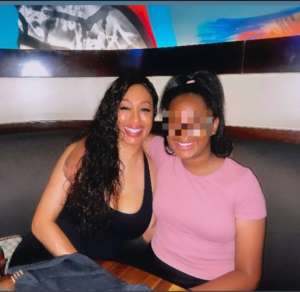Akin to trauma therapy, the seder is a way to process generational memories together, learn how to touch our grief from a distance, and carry on
It feels nothing short of confusing to be here at the beginning of April, writing about Pesach, when we are mentally frozen in time on October 7th.
Last year, I shared the idea of the Pesach seder serving as a form of group therapy. This year, I have been thinking about this idea even more deeply. At the Pesach seder, we recount our story of collective trauma, generational trauma that has followed us through millennia.
While the therapeutic benefit to such an evening might be hard to imagine right now, when I think about what the Pesach seder must have looked like for the first hundred or so years after the exodus, it immediately resonates. They sat as families and recounted the horror, the grief, the hope, and the salvation; it all makes for powerful imagery to pass down.
Jerusalem’s marathon ‘sleep-in’ protest00:00/03:22
And yet, during seder we don’t just sit and talk about the experience of leaving Egypt. We are literally commanded to elicit feelings that were taking place at the time, through a variety of sensory stimulation.
Generally, we view holidays as an opportunity to celebrate the “happy endings,” not the pain and suffering.
But we eat the maror so that we will cry, to remind us of the anguish our ancestors experienced.
We dip vegetables in salt water to remind us of the tears we cried.
We make charoset to remind us of the bricks, the matzah to remember the way we bolted out of Egypt with just the clothes and food on our backs… and on, and on.
One could argue that these are bizarre practices. But, if we view the seder through a therapeutic lens and truly understand the goal of trauma therapy, there is tremendous wisdom here.
Let’s talk about stress and trauma for a minute. When you live your life or experience a normal non-traumatic event, the brain processes it and then it moves into our memories. When a person experiences an event that their brain cannot process, cortisol and adrenaline flood the brain to deal with fear. When an experience is too much for the mind to process, the experience doesn’t move into normal memory storage, it gets “ keeps bouncing around the brain, taking up a huge amount of energy and causing all kinds of issues. In short, PTSD, post-traumatic stress disorder, results when a person experiences an event that their brain simply cannot process.
Many people believe the goal of trauma therapy is to help a trauma survivor forget the trauma and move on. In some ways, the goal of trauma therapy is the opposite. The goal is not to forget the traumatic event, but to process it and be able to remember it without being propelled back into the difficult and unmanageable feelings. Trauma therapy allows the memory to be just that, a memory, not an event that a person continues to re-experience.
Going back to the maror, the salt water, the charoset and the matzah – I believe these foods serve as a sort of trigger. In mental health terms, a trigger is “a stimulus that elicits a reaction.” We intentionally introduce stimuli to remind us of experiences that were deeply traumatic and painful.
I don’t think it is because we are supposed to actually experience the acute grief and pain that our ancestors were living through. That is actually forbidden during a Jewish holiday. I think the seder, like many forms of trauma therapy, offers us the opportunity to explore generational memories, to process them together and learn how to touch that grief and loss from a distance. We have the opportunity to do this so the story can resonate more and we can end the seder by thanking Hashem for His kindness in taking us from oppression and persecution to freedom and healing.
This year, we don’t need to think too hard to find trauma. In fact, many or most of us are living with highly activated current and generational trauma right now. In a few short weeks we will be confronted with Yom HaShoah, Yom Hazikaron, and Yom Ha’atzmaut — all three will be particularly heavy and poignant this year. That is a reality that cannot be avoided, and it is certainly a timely challenge to think about ways to have compassion for ourselves and each other as we navigate mourning and remembering events in both distant and recent past.
This year, I am planning on using the seder as an opportunity to remember the power inherent in grieving, sharing, and please God, healing together. I hope all Jewish people will be free to do so as well.




